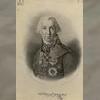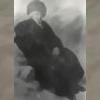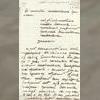National Archives of Karelia : Archival Mosaic of Karelian Culture | |||||||||||
Derzhavin Gavrila Romanovich (1743-1816) | |||||||||||
|
Derzhavin Gavrila Romanovich (1743-1816)was an outstanding Russian poet of the end of the 18th - beginning of the 19th centuries, a prominent statesman, the first Olonets Governor. In May, 1784, Catherine II signed the decree about assignment of councilor of State (rank in civil service in tsarist Russia) G.R.Derzhavinto the position of governor-general of a newly formed Olonets Region. Quite short tenure as the first Olonets Governor (from the middle ofSeptember, 1784, till October, 1785) unabled G.R.Derzhavin to realize his views on power: ...never bow down in front of the throne;remain standing and tell the truth.” In voluminous literature about G.R.Derzhavin's life and work the period of his stay in our region is the least studied. Meanwhile, hisactivities in the position of governor-general of the Olonets Region are fully described in the documents of the National Archives of theKarelian Republic. One of the first documents about G.R.Derzhavin's Olonets life-period is the report to the Government Senate on theopening of the Olonets Region on December, 17, 1784, describing the ceremony of this grand event. Archives' documents are indicative of variety of problems faced by Derzhavin-administrator, of his sincere loyalty to the law and strictdemands towards his subordinate officials whom he wanted to have a disinterested attitude towards Sovereign service. G.R.Derzhavin became Olonets Governor in 13 years upon the Kizhi uprising of the Olonets peasants (1769-1771) had beensuppressed. Strictly demanding fulfillment of duties from peasants he, as a wise ruler, remembered that “ruin and poverty can often be thereason for impudence and crime”. Derzhavin was also interested in activities of the greatest regional public enterprise in Petrozavodsk Alexandrovsky works; he was oneof the first who raised a question about nature protection and deforestation in Karelia. G.R.Derzhavin carried out a great work on implementing a province reform of Catherine II. The works on putting the borders betweenRussia and Sweden, making a plan of Uyezd towns* and a map of the Olonets Region were carried out with the assistance of Derzhavin.During this work the officials assigned by him collected interesting information about northern Karelian villages of that time; some of them -Voinitsy, Reboly, Kimasozero, Yushkozero, etc. - still exist. In the summer of 1785 G.R.Derzhavin made a trip to see the Olonets Region. He traveled by boat and rode the horse about twothousand kilometers. During this difficult and dangerous trip he kept a diary - a daily note which original is kept in Saint-Petersburg. Thisdiary contains valuable information about the life of our region in the 18th century: the first description of waterfall Kivach, province and uyezdtowns, originality of the Karelian culture and language; the first description of “five-stringed psaltery (gusli)” - Karelian Kantele and the northern Old Belief. G.R.Derzhavin's trip around Karelia is described in the documents of the National Archives of the Karelian Republic: the decree of theOlonets regional Administration informs about G.R.Derzhavin's departure from Petrozavodsk on July, 19, 1785; Derzhavin's report datedAugust, 22, 1785, tells about his opening of the town named Kem that was elevated to the rank of Uyezd town by Catherine II. (Uyezd town - a chief town of a district.) The first governor-general of the Olonets Region did a great work on arranging health services, public education and charity in ourregion. G.R.Derzhavin issued the first Olonets department of public charity which primary goal was to control the work of public schools,hospitals, orphanages, etc. He took an active part in replenishing the funds of this project: before his departure he donated a great sum inamount of 100 rubles for charity purposes. There is a record about it made by the secretary of department of public charity. The opening of the first public hospital in Petrozavodsk where poor people were provided with medical care free of charge, working outthe Regulations of this hospital and the drugstore also belong to G.R.Derzhavin. All preparatory work on the opening of the Public School in Petrozavodsk in 1786 is connected with the name of Derzhavin. As thedocuments of the National Archives of the Karelian Republic witness these questions were repeatedly discussed on the meetings ofdepartment of public charity under the chairmanship of G.R.Derzhavin. In spite of his active administrative work he found time to study “theantiquities of this region”. The time of G.R.Derzhavin's stay in Petrozavodsk and Karelia was deeply fixed in the poet's memory. A well-known ode “ The Waterfall”that introduces the Karelian theme into the Russian poetry, a poem “The Storm”, a libretto of the opera “The Miners” are closely connectedwith our region. There is an inevitable question about what works the poet created while living in Karelia. He wrote only one poem inPetrozavodsk called “To the One Who Sets Hopes Upon Himself” devoted to his tense relations with Arkhangelsk and Olonetsgovernor-general T.I.Tutolmin. Here in 1785 he started working on the poem “Soul's Immortality” which he finished only in 1796. On December, 15, 1785 Catherine II signed the decree about G.R.Derzhavin's assignment to the position of governor-general of theTambov Province. There is a letter in the National Archives of the Karelian Republic that was written by him to the Olonets ProvinceAdministration in connection with his transfer to Tambov. |
||||||||||
| |||||||||||
National Archives of Karelia : Archival Mosaic of Karelian Culture | |||||||||||









